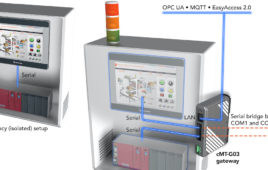Many wireless engineers envision future mobile networks controlling our vehicles, facilitating communication between refrigerators and supermarkets, along with providing fast reliable broadband connections to our homes. This is all possible through 5G connectivity, and much closer than many of us might realize. The hype surrounding 5G is understandable, as the network promised speeds and lower latency in transferring data upon request, up to ten times faster than current networks. However, the overall cost of maintaining this technology could pose a major obstacle. Between chipmakers, device manufacturers, mobile phone companies, and software developers, running the 5G network could collectively cost companies in these industries about $200 billion in research and capital spending.
Even if companies succeed in everything mentioned above, it’s still going to be difficult making a profit on this investment, since the industry isn’t growing much in developed countries anymore. In the United States for example, where the wireless market has become heavily saturated, new subscribers signing up to services without undercutting prices of rivals are already few and far between.
Historically, the evolution between 1G and 4G has been relatively straightforward from the perspective of business and technology, as revenue growth has remained proportionate to usage. 5G’s future as the next-generation wireless network has been known for some time now, and is set to begin with noteworthy carriers like Verizon and AT&T preparing to move from trials to deployments.
Most giants in the mobile carrier industry are aiming for 2020 as their initial rollout of 5G. Wireless carrier revenue is then expected to grow about 2.5 percent through 2025 (roughly half the growth rate these companies reaped over the last five years), and it’s unclear whether 5G will generate more revenue in another 5-10 years. With innovative developments like the IoT utilizing wireless connectivity to enable M2M communication between different machines and devices, it could take years to perfect this technology, during which the payout will be minimal (if there’s any at all).
One of the first major hurdles engineers must overcome are the longtime enemies of high frequency waves like rain, fog, and trees, which cause interference. Companies like AT&T that are researching this issue noted you’ll experience degradations but won’t lose signals completely (in most cases) with environmental conditions. Taking the considerably short fragile nature of high-frequency 5G signals into consideration, carriers have to configure networks differently, and are shifting more of network hardware from tall towers scattered to distribute signals over broad areas, to small clustered sites like rooftops and street poles.
These smaller cells utilize mini-refrigerator-like-cabinets with over 1000 antennas inside them, mounted on poles or rooftops. Network engineers will have to install several of these small cells to handle data demand in dense urban areas, which will further add to the costs of 5G. Some companies aim to make money by offering 5G as an alternative to home broadband connections, competing with cable and landline phone providers, which exorbitant costs could make commercially unfeasible. While the technology isn’t particularly well-suited for the application, carriers are still aiming at 5G for fixed wireless broadband. This is largely due to how impossible it is to identify other genuine revenue opportunities for this technology.
Verizon on the other hand, is taking a more selective approach, which will require a brief period of spending before there’s enough 5G service to provide and become a genuine revenue source. Verizon told its analysts and investors their goal regarding the initial phase of its 5G network is to establish a coverage area of 30 million homes starting next year in Sacramento, and four other potential urban locations yet to be named. Having said that, it could take a few years of network investments for 5G to get within reach of that many homes, and even longer to start seeing any return.
AT&T aims to sell both direct-to-home wireless and mobile service, while T-Mobile has begun adapting its network to 5G through software updates. Sprint has plans to upgrade its antenna towers with advanced network gear, however neither of these companies (outside of AT&T) specified their plans for generating revenue from 5G.
Filed Under: Wireless • 5G and more, M2M (machine to machine)




